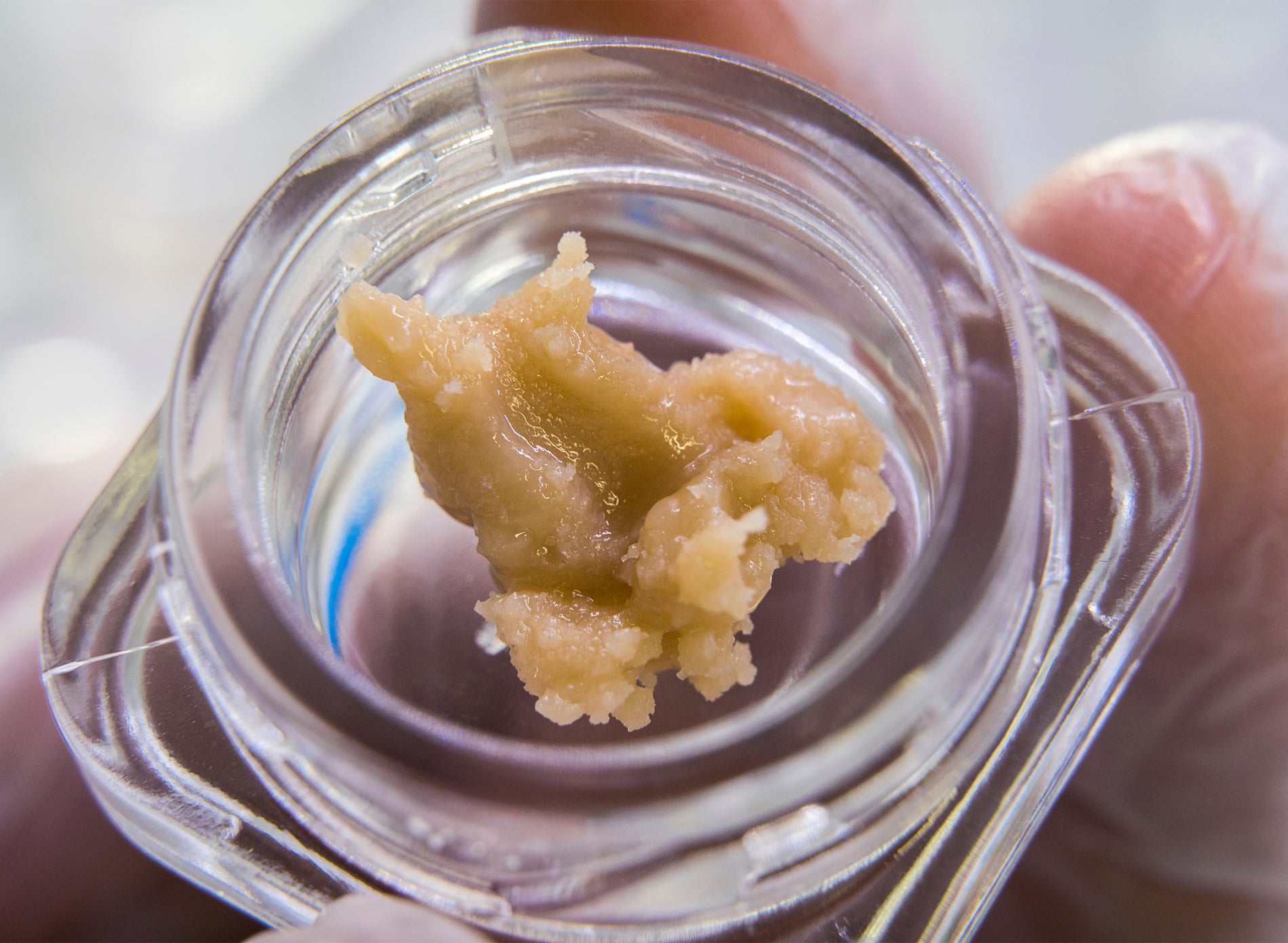Cannabis extracts are no longer limited to hash or wax. Though there has been a surge in dabbing in recent years, many types of cannabis concentrates have become available to the cannabis industry to great success. We’ve seen wax take off and products like vape pens take heed in the market, though plenty of other extracts are available, like rosin and live resin.
Resin is not necessarily a new concept for smokers. The gooey, sticky black gunk that runs down your joint or sticks to your bowl felt like a nuisance, though it came in handy during rough times. It’s a tar-like substance — that can also be found on weed dab rigs — with insoluble properties. Consuming resin is possible, though the THC levels are significantly lower. However, that’s not the resin you’ll find in dispensaries today. Today, the resin and live resin products are fresh and filled with the potential to grow into a dominating sector within the industry. Then, there’s rosin and live rosin, which have spiked in popularity. You can find this in glass concentrate jars across dispensaries.
Though rosin and live resin share many similarities, they also have distinct features that makeup what they are. Below, we’ll break down rosin and live resin to comprehensively examine what they can offer dispensaries and cannabis operators.
What Is Live Resin?
Live resin is a unique extract with a texture that sits between sauce and wax. Live resin is typically a dark yellow substance, but the shades vary from light yellow to white. While resin refers to the extraction process from dried harvested flower, live resin utilizes the freshness of still-living plants. Live resin, specifically, uses frozen material that remains frozen through the duration of extraction. The frozen plant material is flash-frozen before it’s introduced to either butane, propane, or butane hash oil and then pressed.
Why Live Resin?
The reason why many concentrate enthusiasts are looking for live resin is because of its flavor. What concentrates are doing is emphasizing the potency and flavors from the plants, but live resin takes it up a notch. Since the process requires extracting from frozen plants — rather than flower that has undergone the process of drying, curing, and trimming — the trichomes are in abundance. Because of this, live resin preserves the natural flavors and aromas of cannabis due to the terpenes present in the trichomes covering the plant.
What Is Rosin?
Rosin is undoubtedly one of the more impressive concentrates on the market now found in different types of custom parchment paper. However, the reason it’s so special is the extraction process. Rosin doesn’t mingle with solvents in the process. It’s an all-natural extract that utilizes the original sap from the cannabis plant itself. However, rosin is an all-encompassing term that covers live resin, hash rosin, and flower rosin. The source material is pressed at temperatures below 250º Fahrenheit, which properly preserves the terpene profiles that would ruin otherwise during other extraction processes.
Why Rosin?
Rosin and Live Resin are similar in that they produce incredible flavors that are otherwise difficult to experience. However, the critical difference between rosin and live resin is that the former could be more potent. Extract lovers appreciate rosin’s flavors and terpene profiles, even though its THC level is lower. Typically, rosin will appear in a golden-yellow to dark-yellow color. Some say that the best quality rosin has a lighter color.
What Is The Difference Between Live Resin & Rosin?
Live resin and rosin share several similarities, but they also have many differences. In terms of their similarities, live resin and rosin are incredibly potent products that emphasize the plant’s freshness. Resin and rosin provide a comprehensive flavor that captures the terpene profiles from the flower.
The significant difference between the two largely relies on their extraction methods. Whereas live resin uses solvents, like butane and propane, to produce the final product, rosin goes through a solventless process. The resin pushes from the plant through heat and pressure to produce rosin. However, this is also why rosin can be pricier. The extraction process is far more rigorous while only making small batches at a time. That’s why it’s much rarer to find at dispensaries in abundance, though connoisseurs certainly favor rosin over other concentrates.
Storing Live Resin & Rosin
Resin and rosin, like the cannabis plant itself, are quite delicate. Similar to other marijuana products, it relies on its storage to maintain its freshness. This freshness is why storing live resin and rosin is critical to properly preserving its potency and terpenes until the last hit. Much like other concentrates, you must place the products in a cool, dry, dark space with airtight live resin jars. For extra protection, we recommend adding parchment paper for dabs into the jar, as well.



















